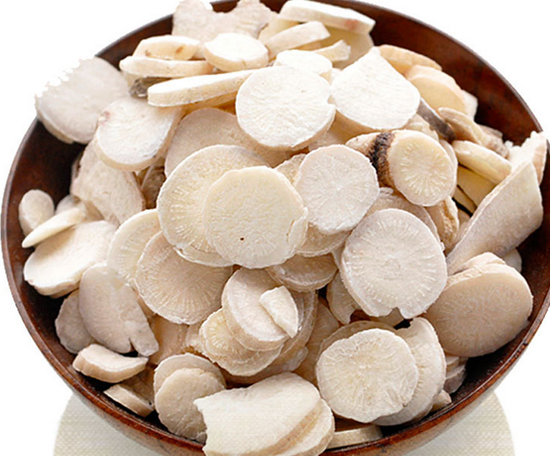Properties:
Sweet, sour and bitter in flavour, slightly cold in nature, it is tropistic to the liver and spleen channels. As a sweet and sour medicine, this herb has Yin-forcing effect, hence, it can replenish blood of the liver and nourish liver-yin; being bitter and cold in property, it can also suppress hyperactivity of liver-yang and clear liver-fire, supplement its deficiency and reduceits hyperactivity. It is thus a main herb for treating liver and is often used to treat syndromes of hyperactivity of liver-yang due to Yin-deficiency, filure in nourishing liver due to blood-deficiency, night sweat due to Yin-deficiency and blood deficiency.
Effects:
Replenishing blood, regulating menstruation, suppressing hyperactivity of liver-yang and astringing Yin to arrest sweating.

Indications:
1. For blood deficiency marked by shallow complexion and menoxenia, it is often used with Radix Rehmanniae Praeparata, Radix Angelicae Sinensis, Radix Pollyygoni Multiflori and Rhizoma Ligustici Chuanxiong to enrich blood and promote blood circulation, regulate menstruation and relieve pain, as in Decoction for Enriching Blood (Buxue Tang) and Decoction of Four Ingredients (Siwu Tang) ; for muscular spasm and pain due to blood deficiency, it is often used with Radix Glycrrhizae to nourish blood, soothe the liver and relieve spasm and pain, as in Decoction of Peony and Liquorice (Shaoyao Gancao Tang).
2. For night sweat due to yin-deficiency, it is used with herbs for nourishing yin and arresting sweating such as Fructus Schisandrae, Ochra Haematitum, Fructus Corni, Os Craconis Fossilia, etc. ; for expathogen invation owing to weakness of superficial resistance, disharmony between ying and wei, perspiration and aversion to wind, it is often used together with Ramulus Cinnamomi to harmionize ying and wei and stop sweating.
3. For hyperactivity of liver-yang due go liver-yin insufficiency, Tinnitus, Blurred Vision, Vertigo, Headache, irritability and Insomnia it is often used with herbs for nourishing yin to suppress liver yang, such as Concha Haliotidis, Flos Chrysanthemi, Ochra haematitum, Radix Achyranthis Bidentae, Radix Rehmanniae, etc.

![Diseases, Symptoms, tcm, [tcmwindow.com]](/uploadFile/adImg/2015/11/11/f5cbfcc0-4df5-4646-9b9a-f316651a0199.jpg)





